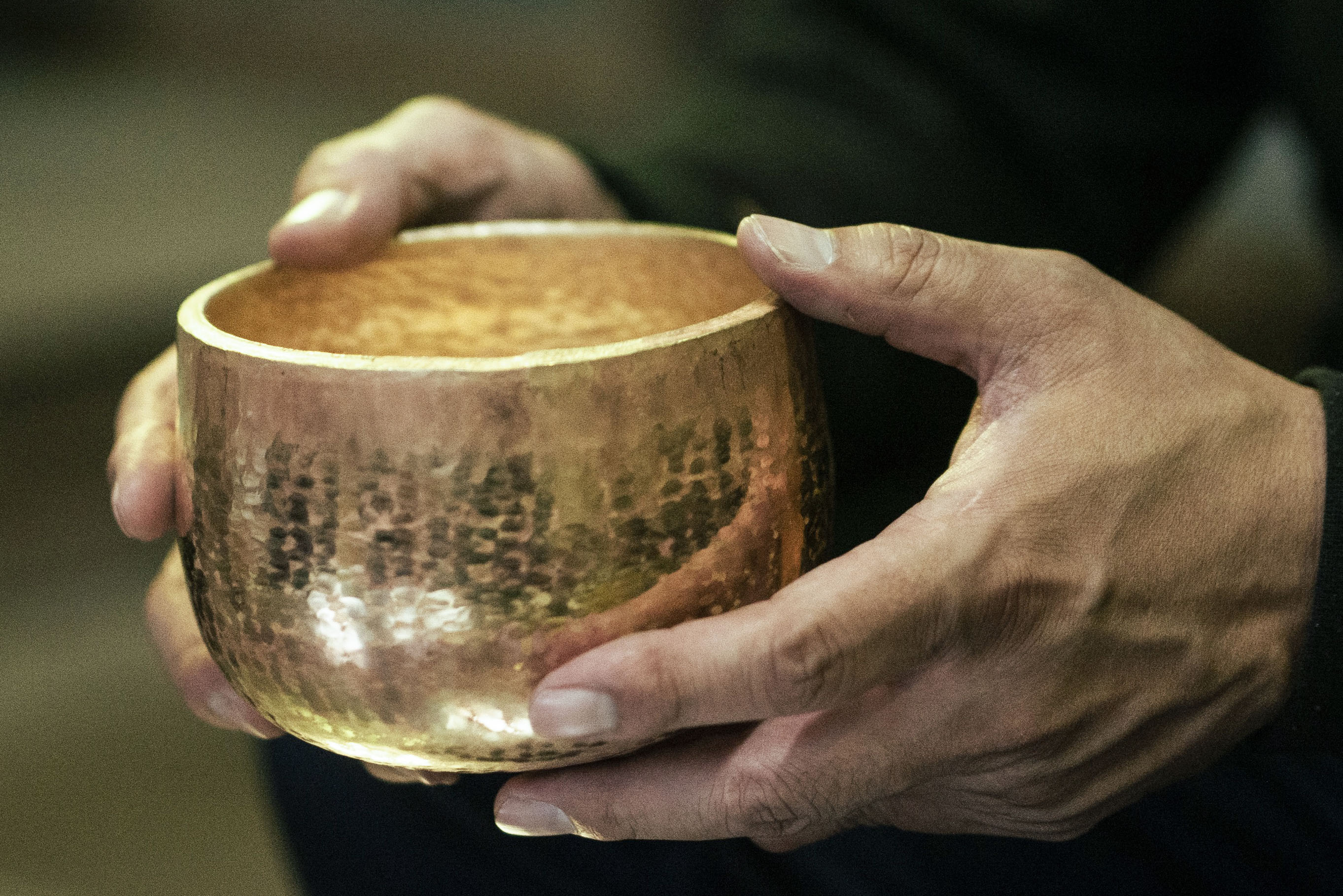
古くから、場を清め、人々の心を癒してきたおりん。
その美しい音色は奥深く、うねりに耳を傾けると穏やかに広がる波紋に身も心も包まれ、ほぐされていく。
黄銅の板から幾つもの金鎚によってかたちを成し最後に、音は相応しいうねりへ導かれ命を吹き込まれる昇龍のおりん。
そのかたち、その音色は、それぞれの個性を持つ。
どこまでも続くような音の海。自らと響きあう音との出会いを。
Ancient times, there has been an "orin" that purifies the space and soothes the hearts of people.
Its beautiful sound is profound, and when one listens closely to its undulating melodies, they become gently enveloped in spreading ripples, both physically and spiritually, gently unwinding.
Forged from brass plates, shaped by numerous hammers, and finally infused with life, the "orin" is like a rising dragon guided to its appropriate undulations.
Its form, its sound, each possesses its own uniqueness.
An endless sea of sound stretches out, inviting encounters with harmonious echoes of the self.




